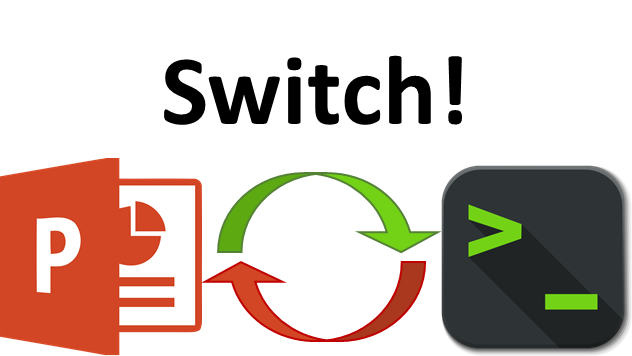Part III: Ruby¶
OPEN UP THE PDF OF THE PRIMER
Overview¶
- Slides on ruby overview
- Start looking at a state machine file
- Slide on output

Switch!
- Look at MSI-cache.sm
- Show the top part with the parameters
- Build the protocol
- Note: May want to use a different build directory (e.g., X86_MSI)
scons -j100 build/X86/gem5.opt PROTOCOL=MSI SLICC_HTML=True
vi src/learning_gem5/part3/MSI-cache.sm
ls build/X86/mem/protocol
vi build/X86/mem/protocol/L1Cache_Controller.py

Switch!
Parameters to state machines¶
- Talk about the parts of the state machine file
- Talk about cachememory
- talk about message buffers

Switch!
- Show the message buffers in the cache and the directory
vi src/learning_gem5/part3/MSI-cache.sh
vi src/learning_gem5/part3/MSI-dir.sh
- Talk about the mandatory event queue
- Talk about the memory buffer
States and events and other function¶
- talk about states and show the MSI-cache.sm states
vi src/learning_gem5/part3/MSI-cache.sh
- talk about events and show the MSI-cache events
- Show the other functions, etc.
- Entry
- TBE/table
- Declarations
- other functions

Switch!
In/out ports¶
- High-level out_port and in_port stuff

Switch!
- Look at MSI-cache.sm
vi src/learning_gem5/part3/MSI-cache.sh
- Talk about the message types
- Talk about how message buffer above links to the ports
- Look at the message and make a decision
- THIS IS THE ONLY PLACE YOU’re ALLOWED TO USE IF STATEMENTS
- Start with mandatory queue
- Talk about how peek automatically populates in_msg

Switch!
- go through slide.

Switch!
Actions¶
- Look at the actions in MSI-cache.sm
- talk about automatic variables and where they come from (passed in in in_port)
- talk about enqueue and out_msg
- nesting peek and enqueue
- NO IF STATEMENTS!
- Special z_stall.

Switch!
- go through slide
Transitions¶
- go through slide.
- Show HTML table
Config scripts¶
- go through slides
- After slide on sequencers, let’s look at the config scripts for MSI-cache

Switch!
- The first file we’ll look at is kind of like caches.py from our simple scripts.
- We extend the L1Cache_Controller like we did Cache before. (And direcotry)
- Construct the whole Ruby
- Create sequencers
- Connect everything up
- Also extend the network to have our point-to-point network
vi configs/learning_gem5/part3/msi_caches.py
- Next, let’s check out simple_ruby.py
- Talk about how there’s two phases. Creating the cache system and setup. This is required because there is a circular dependence between RubySystem and RubyNetwork. :/
- Talk about creating something with multiple threads.
vi configs/learning_gem5/part3/simple_ruby.py

Switch!
Other ruby things¶
See slides.
Things I’d like to add¶
- Debugging
- It would be cool to go through an example broken protocol.
- If I ever do a multi-day tutorial, this would be good to have as an activity.
